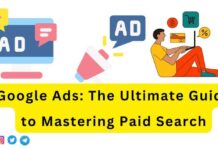Google Ads Keyword Planner: Running a successful Google Ads campaign starts with choosing the right keywords. That’s where Google Ads Keyword Planner comes in. It’s not just a tool; it’s your roadmap to discovering high-performing keywords, targeting the right audience, and getting the most out of your ad spend.
What Is Google Ads Keyword Planner?
Google Ads Keyword Planner is a free tool by Google designed to help advertisers identify keywords relevant to their products or services. It provides insights like search volume, competition level, and cost-per-click (CPC) estimates.
Whether you’re a beginner or a pro, this tool is a must-have to refine your campaigns.
Why Use Keyword Planner?
Benefits of Keyword Planner
- Discover High-Value Keywords: Find search terms that align with your goals.
- Optimize Campaign Performance: Target keywords with high intent and ROI.
- Stay Competitive: Analyze competition metrics to stay ahead in the game.
- Plan Budgets Effectively: Get CPC estimates to control ad spend.
Who Should Use It?
From small businesses to large corporations, anyone running Google Ads can benefit. It’s especially useful for marketers, SEO specialists, and entrepreneurs looking to maximize their reach.
How to Access Keyword Planner
Requirements for Access
To use Keyword Planner, you’ll need a Google Ads account. Don’t worry, it’s free to set up!
Setting Up Your Google Ads Account
- Go to Google Ads.
- Click on “Start Now” and follow the instructions to create your account.
- Once set up, navigate to the Tools & Settings menu and select Keyword Planner.
Key Features of Keyword Planner
Discover New Keywords
Input a seed keyword, and Keyword Planner will generate a list of related terms. For example, typing “organic skincare” might suggest “natural face creams” or “chemical-free moisturizer.”
Search Volume and Forecasts
View monthly search volumes, estimated clicks, and impressions. This helps you prioritize high-potential keywords.
Competition Analysis
Understand how competitive a keyword is. Lower competition keywords are often easier to rank for, especially for new campaigns.
Step-by-Step Guide to Using Keyword Planner
Finding New Keywords
- Open Keyword Planner and select Discover New Keywords.
- Enter your product, service, or website URL.
- Review the list of suggested keywords and filter by relevance, search volume, or competition.
Analyzing Search Volumes
Check the search trends for your chosen keywords. Keywords with steady or growing search volumes are ideal for long-term campaigns.
Creating a Keyword List
Export the most relevant keywords to a CSV file or directly into your Google Ads campaign. Organize them into ad groups for better targeting.
Integrating Keywords into Campaigns
Once you have your keyword list, include them in:
- Ad headlines and descriptions.
- Landing page content.
- Targeting settings in Google Ads.
Best Practices for Using Keyword Planner
Focus on Long-Tail Keywords
Long-tail keywords (e.g., “buy organic skincare online”) often have lower competition and higher conversion rates than single words.
Group Keywords Effectively
Organize related keywords into groups to create targeted ad campaigns. This improves relevance and Quality Score.
Consider Seasonal Trends
Use the seasonality insights in Keyword Planner to target keywords that perform well during specific times of the year.
Leverage Negative Keywords
Add negative keywords to prevent your ads from showing for irrelevant searches. For example, if you sell luxury products, exclude terms like “cheap” or “budget.”
Common Mistakes to Avoid
Ignoring Competition Metrics
Don’t just focus on search volume—low competition keywords are often more cost-effective.
Overloading Ads with Keywords
Avoid cramming too many keywords into a single ad group. It can dilute relevance and hurt your Quality Score.
Skipping Negative Keywords
Failing to use negative keywords can waste your budget on irrelevant traffic.
Google Ads Keyword Planner vs Other Tools
Comparison with Paid Tools
While tools like SEMrush and Ahrefs offer advanced features, Keyword Planner provides essential insights for free, making it an excellent choice for budget-conscious marketers.
Advantages of Keyword Planner
- Free to use.
- Direct integration with Google Ads campaigns.
- Reliable data straight from Google.
Future of Google Ads Keyword Planner
AI and Predictive Analytics
As AI advances, expect smarter keyword suggestions based on user behavior and predictive trends.
Integration with Voice Search Trends
With voice search becoming more common, the tool is likely to adapt to conversational keywords and queries.
Conclusion
The Google Ads Keyword Planner is an invaluable tool for building, optimizing, and scaling your ad campaigns. By understanding its features, following best practices, and avoiding common mistakes, you can drive targeted traffic and achieve better ROI. So, why wait? Start using Keyword Planner today and elevate your Google Ads game!
FAQs
1. What is Google Ads Keyword Planner?
Google Ads Keyword Planner is a free tool to discover keywords, analyze search volumes, and plan campaigns.
2. Do I need to pay for Google Ads to use Keyword Planner?
No, you can access Keyword Planner with a free Google Ads account.
3. Can beginners use Keyword Planner?
Yes, it’s user-friendly and perfect for both beginners and professionals.
4. What are long-tail keywords?
Long-tail keywords are specific phrases with lower competition and higher conversion potential.
5. How do I find negative keywords?
Review search terms in Keyword Planner and exclude irrelevant or low-performing ones.
6. Is Keyword Planner better than paid tools?
For basic insights and budget planning, it’s a fantastic free alternative to paid tools.
7. How often should I update my keyword list?
Regularly—ideally, every month or when launching new campaigns.
8. Does Keyword Planner support multiple languages?
Yes, it supports various languages and regions, allowing global campaign planning.




